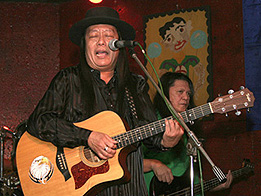When it comes to memories of Martial Law, the most striking ones are the stories of the heroes of the underground, the innocents who were tortured, Ninoy Aquino’s assassination, and the EDSA revolution that set Philippine society free. The stories here are not those stories. Rather, these are the snippets that may be on the brink of being forgotten by many, but deserve to be remembered still. These little-known stories of how art and culture—both highbrow and pop—still thrived in a time of strict authoritarian rule are, if anything, a testament to the indomitable spirit of the people of that time. 1. Ninoy, Imelda, and the CCP As it turns out, the enmity between then-senator Benigno “Ninoy” Aquino Jr. and then-First Lady Imelda Marcos that peaked during Martial Law was already brewing before then, particularly their debate over the Cultural Center of the Philippines in the late ‘60s. The story of the Cultural Center of the Philippines and Imelda’s relentless drive to bring her vision of the arts to life is no secret, but what some don’t know is that her pet project peeved Aquino, who thought the structure and its glamorous proponent were insensitive to the many who lived in squalor while it was being built. Aquino’s deep disdain for this project led him to deliver one of his most famous speeches, “A Pantheon for Imelda” in 1969, where he called her a Filipino Eva Peron. This was short of outright calling her husband Ferdinand, in comparison to Argentina’s Juan Peron, a dictator. According to Sterling Seagrave in the book “The Marcos Dynasty,” this angered then-President Marcos, who said it was unmanly of Aquino to involve his wife Imelda in their political brawl. 2. Political PETA The Philippine Educational Theater Association (PETA), now known for staging poignant comedies and sidesplitting satires, actually had a more political past. At the height of Martial Law, the company staged protest plays such as Lito Tiongson’s “Walang Kamatayang Buhay ni Juan Dela Cruz Alyas…” which alluded to Marcos as a military ruler and depicted the underground fight for freedom. According to University of the Philippines Art Studies professor Brenda Fajardo, the company also taught theater to communities all across the country so that during the Martial Law era, “theater became a potent vehicle for political expression.” 3. Lino Brocka the freedom fighter Brilliant director that he is, it’s hard to see Lino Brocka as anyone other than a filmmaker. But in the time of Martial Law, Brocka did more than just write, shoot, and direct. Because his stark, social realist work showed too much of the harsh realities that the government wanted to hide, Brocka’s films such as Macho Dancer and Bayan Ko were labeled subversive and censored. In 1983, Brocka co-founded the Concerned Artists of the Philippines (CAP), a group that fought censorship and advocated socially relevant art. According to the website of the artists’ group Tudla, Brocka’s anti-government stance extended even after Martial Law because he believed that the Cory Aquino administration didn’t bring the change he sought.

Freddie Aguilar’s rendition of “Bayan Ko,” meanwhile, became the iconic song for the People Power Revolution. File photo by Joe Galvez
4. Freddie Aguilar, the Martial Law era’s Phillip Phillips Folk singer Freddie Aguilar of the long hair and the guilty child anthem “Anak” actually started his career in a singing competition: the Metro Manila Popular Music Festival, which was the “American Idol” of that generation. Aside from introducing the world to Aguilar, the festival, which ran from 1977 to 1985, is also responsible for bringing videoke staples like “Kay Ganda ng Ating Musika”, “Umagang Kay Ganda,” and “Ewan,” to the collective Filipino consciousness.
5. ‘Bagong Lipunan’ song In a faint echo of the Two Minutes Hate in George Orwell’s dystopian novel, “1984,” the government required that the song “Bagong Lipunan” follow the National Anthem at flag ceremonies while Marcos was in power. Composed by National Artist for Music Felipe Padilla de Leon, part of the song went “Bagong bansa, bagong galaw, sa Bagong Lipunan.”
6. The Blue Ladies Even the Imeldific Iron Butterfly needed to be schooled in the ways of high society, which is why she surrounded herself with her posse of socialites, collectively known as the “Blue Ladies.” The Blue Ladies, according to Carmen Navarro Pedrosa in her book, “The Rise and Fall of Imelda Marcos,” were wives of powerful men who needed political connections for their business. Among them were talk show host Elvira Manahan, and Imelda Ongsiako Cojuangco, wife of then-PLDT president Ramon Cojuangco. Pedrosa wrote that unlike Imelda, her Blue Ladies were confident and at ease in their positions of power, and they helped out Imelda by educating her in “the ways of the women of the world.”
7. Imelda, a lesbian? A few years after her husband’s illicit affair with American starlet Dovie Beams exploded by way of sex tape (which at that time was all audio, no visuals), Imelda fostered a close friendship with Italian socialite Cristina Ford, wife of motor magnate Henry Ford II. According to Seagrave, the two women were so close that rumors of a hot lesbian romance spread like wildfire, much to the dismay of Ferdinand Marcos.
8. No anime! Martial Law didn’t spare even the children, who were deprived of their favorite cartoon, “Voltes V,” when Marcos had it and other anime shows like “Daimos” and “Mazinger Z” banned from broadcast a year after they premiered in the Philippines.

Voltes V came back on air in the 1990’s at GMA7, much to the delight of Martial Law kids and their own kids. Wikipedia photo
His excuse was that the cartoons were too violent for children, but, according to the “Voltes V” trivia page on the Anime News Network, “many Filipinos believe
Marcos was afraid that ‘Voltes V’s storyline involving an aristocratic empire and its oppressed masses reflected his dictatorship in the country.”
9. Partying, ML style Everyone, not just impetuous teenagers, had to abide by a curfew during Martial Law. The dreaded Metrocom, or metropolitan police, detained anyone on the road between 11 p.m. to four a.m. Thus, parties had to end before 11 p.m. and if they didn’t, they turned into sleepovers, which, according to partygoers of that time, was actually something they looked forward to.
10. Ikabod Bubwit In the Martial Law years, the rodent of the moment was Ikabod Bubwit, a witty, tailless mouse whose experiences echoed those of the ordinary Filipino. Through the satirical strip, artist Nonoy Marcelo reimagined Philippine society as Dagalandia, complete with the same autocratic leaders and sociopolitical problems that the country was experiencing at the time. According to the Philippine News Agency, Time Magazine even featured Marcelo in its Sept. 12, 1988 issue, recognizing his "oblique technique to criticize the repressive Marcos regime." –
KG/YA, GMA News 




